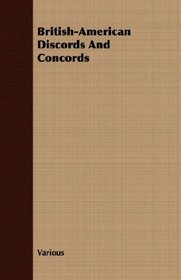Search -
British-American Discords And Concords
British-American Discords And Concords
Author:
PUBLISHERS FOREWORD - THE History Circle first met at the City Club of New York in May, 1917. Its object is to study and present in simple form past national and inter national experiences for such light as they may throw on present events and policies. The membership of the History Circle is restricted to American citizens, and comprises histor... more »
Author:
PUBLISHERS FOREWORD - THE History Circle first met at the City Club of New York in May, 1917. Its object is to study and present in simple form past national and inter national experiences for such light as they may throw on present events and policies. The membership of the History Circle is restricted to American citizens, and comprises histor... more »
ISBN-13: 9781406736830
ISBN-10: 140673683X
Publication Date: 10/9/2007
Pages: 112
Rating: ?
ISBN-10: 140673683X
Publication Date: 10/9/2007
Pages: 112
Rating: ?
0 stars, based on 0 rating




